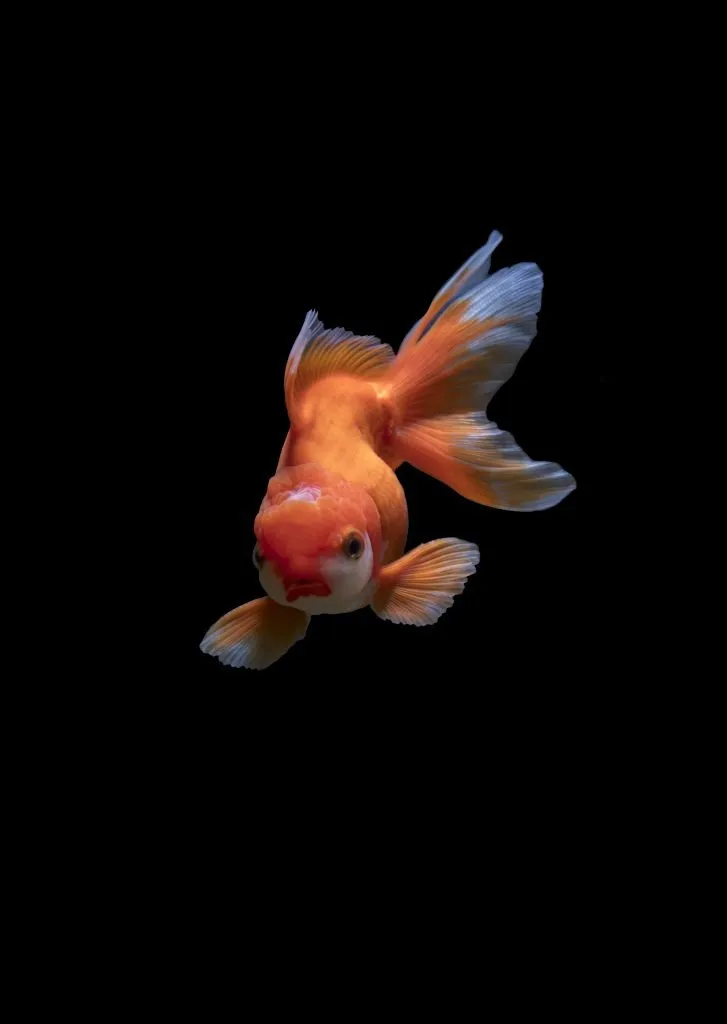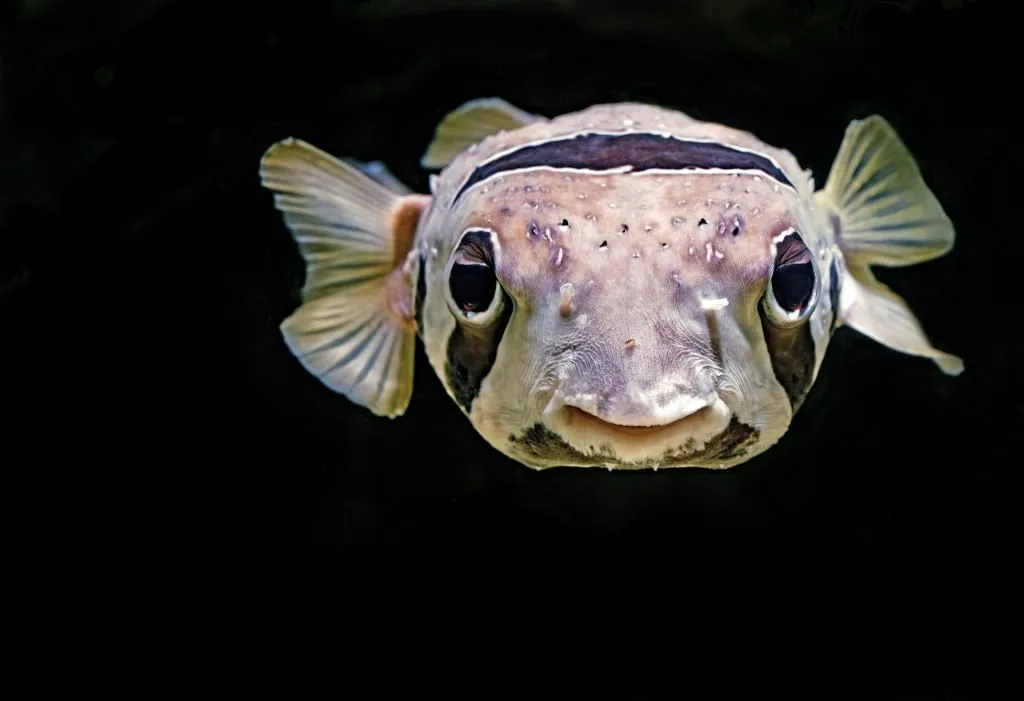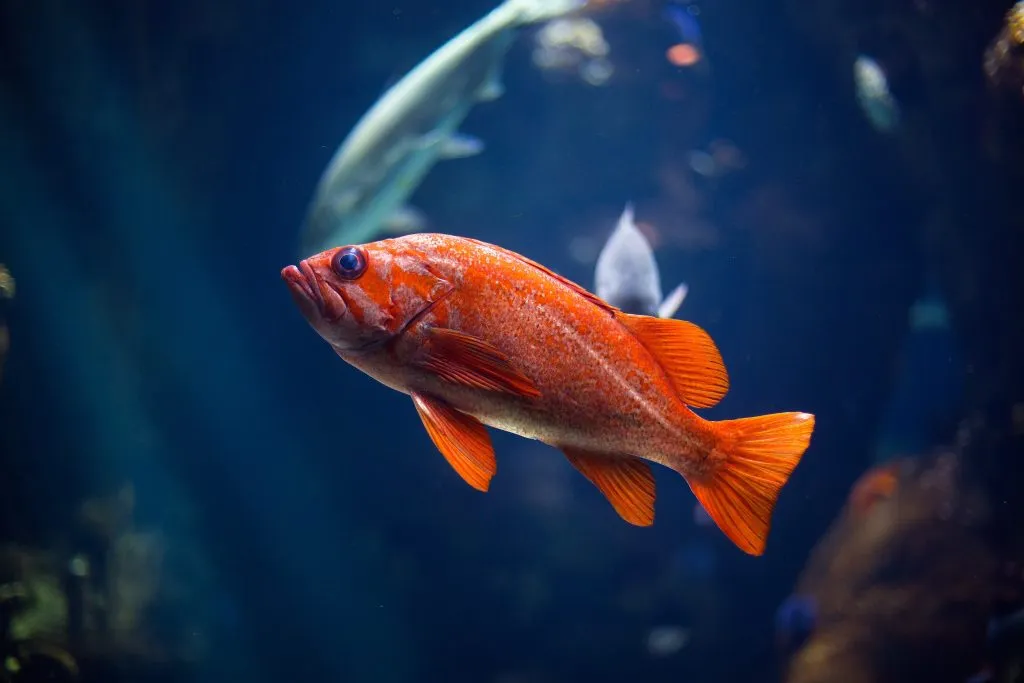Did you know that fish have an amazing variety of spines and skeletal structures that help them navigate through the water and protect themselves from predators? From the sharp spines of the lionfish to the flexible skeletal structures of eels, the world of fish is filled with fascinating adaptations.
Whether it’s for swimming, defense, or even attracting mates, the unique shapes and sizes of these fish spines and skeletal structures play a crucial role in the survival and success of these underwater creatures. In this article, we will explore the diverse world of fish spines and skeletal structures and uncover their intriguing functions. So, get ready to dive into the captivating world of fish biology!
The Basic Structure of Fish Spines
Types of Spines in Fish
When it comes to fish, their spines are an essential part of their anatomy. These spines can vary in shape and form, depending on the species of fish. Broadly speaking, there are two types of spines found in fish: soft-rayed spines and spiny-rayed spines. Each type plays a unique role in the overall structure and function of a fish’s skeletal system.
Anatomical Structure of Fish Spines
Fish spines are composed of a series of vertebrae that are interconnected by joints and ligaments. This vertebral column provides support and flexibility to the fish, allowing for efficient movement and swimming in their aquatic environment. The vertebrae are typically cylindrical or flattened in shape, with bony or cartilaginous structures depending on the type of fish. At the tip of each vertebra, there may be specialized structures known as neural and haemal spines, which serve to protect the delicate nerves and blood vessels running along the fish’s back and belly.
The Role of Spines in Fish Anatomy
Fish spines serve several important functions in a fish’s anatomy. Firstly, they provide structural support, allowing the fish to maintain its body shape and swim efficiently. The spines also serve as attachment points for muscles, enabling the fish to generate propulsive forces and control its movements. Additionally, the spines can act as a defense mechanism, deterring predators or providing a physical barrier during territorial disputes. Overall, the spines play a vital role in ensuring the survival and well-being of fish species.
Different Types of Fish Skeletons
Cartilaginous Skeletons
Cartilaginous fish, such as sharks and rays, possess skeletons made primarily of cartilage rather than bone. This unique adaptation allows for greater flexibility and maneuverability, especially in an underwater environment. The cartilaginous skeleton is composed of specialized cartilage structures, known as chondrichthyans, which provide support and protection to vital organs. Despite the absence of true bones, these fish still have robust spines that function similarly to those found in bony fish.
Bony Skeletons
Bony fish, which include the majority of fish species, have skeletons that are primarily composed of bone. The bony skeleton provides a rigid framework for the fish, ensuring stability and strength. These skeletons consist of numerous interconnected bones that form the fish’s vertebral column, ribs, and various other skeletal structures. The spines in bony fish are typically bony extensions of the vertebrae, known as fin rays, which provide additional support and control during swimming.
Hybrid Skeletons
In some cases, fish species may have a hybrid skeleton that combines elements of both cartilage and bone. This adaptation allows for a balance between flexibility and strength, providing the fish with optimal structural support and maneuverability. Examples of fish with hybrid skeletons include sturgeon and gar, which possess a combination of cartilaginous and bony structures in their skeletal systems. These hybrid skeletons have unique spine structures that enable the fish to thrive in their specific environments.

The Anatomy of Soft-Rayed Fish
Definition of Soft-Rayed Fish
Soft-rayed fish, also known as teleosts, are a diverse group of fish species that possess spines composed of soft, flexible rays. These rays are elongated structures that extend from the fish’s body and are supported by thin, flexible bones or cartilage. Soft-rayed fish are the dominant group of fish species and can be found in various aquatic habitats, from freshwater streams to deep-sea environments.
Structure and Framework of Soft-Rayed Fish Skeleton
The skeletal structure of soft-rayed fish is characterized by the presence of long, flexible rays that support the fins and provide maneuverability. These rays are composed of a protein called actin, which gives them their soft and flexible nature. The rays are connected to the fish’s vertebrae, which are typically composed of bony structures. This combination of flexible rays and bony vertebrae allows soft-rayed fish to navigate through water with precision and agility.
Role of Spines in Soft-Rayed Fish
The spines in soft-rayed fish serve several important functions. Firstly, they provide stability and support to the fish’s fins, allowing for precise control of movement. The spines can also act as a form of communication, as some species have specialized spines that can be erected or displayed during mating or territorial disputes. Additionally, the spines may have sensory functions, housing specialized nerve endings that provide feedback on the fish’s environment. Overall, the spines in soft-rayed fish play a crucial role in their overall survival and adaptation to their specific habitats.
The Anatomy of Spiny-Rayed Fish
Definition of Spiny-Rayed Fish
Spiny-rayed fish, also known as acanthomorphs, are a diverse group of fish species that possess spines composed of stiff and rigid rays. These rays are reinforced by bony structures, providing strength and stability to the fish’s fins. Spiny-rayed fish can be found in various aquatic habitats, including both freshwater and marine environments.
Structure and Framework of Spiny-Rayed Fish Skeleton
The skeleton of spiny-rayed fish is characterized by the presence of sharp and rigid spines supported by bony structures. These spines are typically connected to the fish’s vertebrae and extend outward from the body, forming the framework for the fish’s fins. The spines in spiny-rayed fish are composed of dense bone tissue, providing stability, strength, and protection to the fish’s fins and body.
Role of Spines in Spiny-Rayed Fish
The spines in spiny-rayed fish serve several important purposes. Firstly, they provide stability and rigidity to the fins, allowing for precise control of movement and agility. The spines also act as a form of protection, deterring potential predators by inflicting injury or adding an extra layer of defense. In some species, the spines may have venomous or poisonous properties, serving as an effective deterrent against predators or as a means of capturing prey. Overall, the spines in spiny-rayed fish are a crucial component of their anatomy, enabling them to thrive in different aquatic environments.

Common Fish Bone Disorders
Causes of Fish Bone Disorders
Fish bone disorders can arise from various factors, including poor nutrition, genetic predispositions, and external injuries. Inadequate diet, lacking essential nutrients such as calcium and phosphorus, can lead to weakened bones or deformities in fish. Genetic factors can also play a role, with certain fish species being more prone to bone disorders due to inherent weaknesses in their skeletal structures. Additionally, injuries such as fractures or infections can contribute to the development of fish bone disorders.
Types of Fish Bone Disorders
There are several types of fish bone disorders that can affect fish. One common disorder is spinal deformation, where the vertebrae become misaligned or malformed. This can lead to difficulties in swimming, feeding, or overall mobility. Another disorder is osteoporosis, where the bones become weak and prone to fractures. Fish with osteoporosis may experience difficulties in maintaining their body structure and may become more susceptible to injuries. Other bone disorders in fish include scoliosis, where the spine bends or curves unnaturally, and arthritis, which leads to inflammation and pain in the joints.
Treatment of Fish Bone Disorders
Treating fish bone disorders can be challenging and often requires a multi-faceted approach. Providing a balanced and nutrient-rich diet is crucial to ensure proper bone development and prevent further complications. In some cases, supplemental vitamins and minerals may be administered to address specific deficiencies. Additionally, providing a suitable aquatic environment that allows for natural movement and reduces stress can aid in the recovery and prevention of bone disorders. In severe cases, surgical intervention or the use of supportive devices may be necessary to correct skeletal deformities or aid in the healing process.
Fish Spines and Defense Mechanisms
Use of Spines as Weapons
For many fish species, spines are an effective means of defense and protection. Fish with spines can use them as weapons, inflicting injuries to predators or competitors during territorial disputes. The spines can be erect or extended when the fish feels threatened, serving as a visual warning to potential aggressors. Some species have specialized spines that contain venom or toxins, which can cause severe pain or even death to those who come into contact with them. Overall, spines in fish serve as a formidable defense mechanism, helping them to survive in their often hostile aquatic environments.
Spine-Related Toxicities in Fish
In certain fish species, the spines may contain venom or toxins that can be harmful to humans or other animals. Stingrays, for example, have spines on their tails that contain venomous glands. When threatened or stepped on, they can use these spines to inject venom into their attackers, causing intense pain and potential complications. Lionfish, another example, possess spines that are covered in venomous mucus, which can cause painful stings and allergic reactions in humans. It is important to exercise caution when handling fish with spines to avoid potential toxicities.
Impact on Predators
The presence of spines in fish can have a significant impact on their predators. The spines act as a deterrent, making the fish less desirable or more difficult to catch. Predators that attempt to attack a fish with spines may injure themselves, potentially deterring future attempts. Some fish species have even developed elaborate defense mechanisms, utilizing their spines in conjunction with other physical adaptations to ward off predators. The spines in fish play a crucial role in their survival and protection against predation.

Comparative Analysis of Spines in Different Fish Species
Comparison of Bony and Cartilaginous Fish
Bony fish and cartilaginous fish differ significantly in their skeletal structures, including their spines. Bony fish have spines composed of bony material, providing rigidity and strength. These spines are typically connected to the fish’s vertebrae and are involved in fin support and control. On the other hand, cartilaginous fish have spines that are reinforced by flexible cartilage, providing greater flexibility and maneuverability. The spines in cartilaginous fish play a similar role in supporting their fins and enabling movement, but with a different composition. The distinct differences in spine structure reflect the unique adaptations of these two groups of fish to their respective environments.
Spiny-Rayed vs Soft-Rayed Fish
Spiny-rayed fish and soft-rayed fish have different types of spines, each serving a specific purpose. Spiny-rayed fish have rigid spines composed of bony material, providing stability, strength, and protection. These spines play a crucial role in fin support and control, as well as defense against predators. Soft-rayed fish, on the other hand, have flexible spines made of soft tissues, allowing for greater flexibility and maneuverability. These spines provide support to the fins, aid in precise movement, and can perform additional roles such as communication or sensory detection. The different types of spines in these two groups of fish emphasize the diverse strategies they employ to thrive in their environments.
Vertebral Column Differences Across Species
The vertebral column, which includes the spines, can vary significantly across different fish species. In some species, the vertebrae may be fused together, providing additional strength and stability. Other fish species may have more flexible vertebrae, allowing for greater maneuverability and bending. The number of vertebrae can also vary, with some species having more vertebrae, providing increased flexibility, while others may have fewer, emphasizing strength and rigidity. These variations in the vertebral column highlight the diverse adaptations of fish species to their specific ecological niches and lifestyles.
Fish Spines and Evolution
How Fish Spines Have Evolved Over Time
Fish spines have undergone significant evolutionary changes over millions of years. Early fish species had more primitive spines, lacking the complexity and diversity seen in present-day fish. As fish evolved and adapted to various environments, their spines developed new forms and functions. The transition from cartilaginous to bony spines, for example, allowed for greater strength and support. The evolution of venomous spines in certain fish species provided additional defense mechanisms. The constant adaptation and refinement of fish spines have played a crucial role in shaping the diversity of fish species we see today.
The Role of Genetic Factors
Genetic factors also contribute to the evolution of fish spines. Mutations in genes responsible for spine development can lead to the emergence of new spine structures or modifications in existing ones. Natural selection then acts on these genetic variations, favoring advantageous traits and eliminating detrimental ones. Over time, this genetic diversity and selection process drive the evolution of fish spines, allowing for greater adaptability to changing ecological conditions.
Impact of Environmental Changes on Fish Spines
Environmental changes, such as shifts in temperature, habitat availability, or predation pressures, can influence the evolution of fish spines. Fish populations exposed to different environmental conditions may experience selective pressures that favor certain spine characteristics. For example, fish living in habitats with higher predation risks may develop stronger and more defensive spines compared to populations in safer environments. Similarly, changes in temperature or habitat structure may drive adaptations in spine shape or size to maximize swimming efficiency or maneuverability. The complex interplay between genetic factors and environmental pressures shapes the evolution of fish spines.
Implications for Fishing and Consumption
Practical Tips for Avoiding Fish Bones
While fish bones can pose a nuisance when consuming fish, there are several practical tips to minimize the risk of encountering bones. Firstly, carefully inspect the fish before cooking or consuming it, paying attention to the area around the spine and ribs where bones are most likely to be present. Additionally, using specialized tools such as fish bone pliers or tweezers can aid in the safe removal of bones. It is also advisable to cook fish thoroughly, as heat can soften bones and make them easier to detect and remove.
Impact of Fish Spines on Food Safety
Although fish spines are not inherently harmful from a food safety perspective, improper handling or ingestion of bones can pose a choking hazard. Consuming fish bones can lead to throat or esophageal injuries, especially in young children. It is essential to exercise caution when consuming fish, especially species known to have more prominent or delicate spines. Proper cooking, removal of bones, and careful consumption can help ensure the safety of fish as a food source.
Procedures for Safe Consumption
To safely consume fish, it is important to follow specific procedures. Start by thoroughly cleaning and preparing the fish, removing any visible bones. When cooking the fish, ensure it reaches the appropriate internal temperature to eliminate any potential pathogens. When consuming the fish, take small, deliberate bites and chew the fish thoroughly to detect and remove any bones. It is also advisable to drink plenty of fluids while eating fish to aid in swallowing and prevent bone-related incidents.
Future Research into Fish Spines and Skeletal Structures
Current Trends in Ichthyology
Ichthyology, the scientific study of fish, is a rapidly evolving field with several current trends that focus on fish spines and skeletal structures. Researchers are investigating the genetic and developmental mechanisms that underlie spine and skeletal formation, aiming to unravel the complexity of these structures. Advances in imaging technology and molecular techniques have also enabled more detailed and precise analysis of fish skeletons, offering insights into their functional properties and evolutionary history. The integration of interdisciplinary approaches, such as biomechanics and paleontology, further expands our understanding of fish spines and their significance in the natural world.
Emerging Methods of Species Identification
Determining the species of a fish based solely on its spine or skeletal features can be challenging. However, recent advancements in molecular techniques and DNA sequencing have opened up new avenues for species identification. By analyzing genetic markers specific to different fish species, researchers can develop reliable methods for identifying fish based on their spines or skeletal structures. This information has significant implications for conservation efforts, as it allows for accurate monitoring of fish populations and the identification of endangered or invasive species.
Potential Impact of Climate Change on Fish Spines
Climate change has the potential to impact fish populations and their skeletal structures. Rising temperatures, ocean acidification, and changes in food availability can all influence the development and function of fish spines. For example, increased water temperatures may lead to changes in spine growth rates or alterations in bone density, affecting the overall structural integrity of fish. Understanding the potential effects of climate change on fish spines is crucial for predicting and mitigating the impacts of global environmental change on fish populations and ecosystems.
In conclusion, fish spines and skeletal structures play a critical role in the anatomy, evolution, and survival of fish species. The different types of spines found in fish, such as soft-rayed and spiny-rayed spines, reflect the diverse adaptations of fish to their environments. Fish bones can develop disorders, but with proper care and nutrition, these disorders can be mitigated. Spines in fish serve various functions, including defense mechanisms and communication. By studying fish spines, researchers can gain insights into the evolutionary history of fish, track species populations, and understand the potential impacts of climate change. When consuming fish, precautions should be taken to avoid bone-related incidents. Overall, fish spines and skeletal structures continue to be a fascinating area of research with implications for both scientific understanding and practical applications in fishing and consumption.

